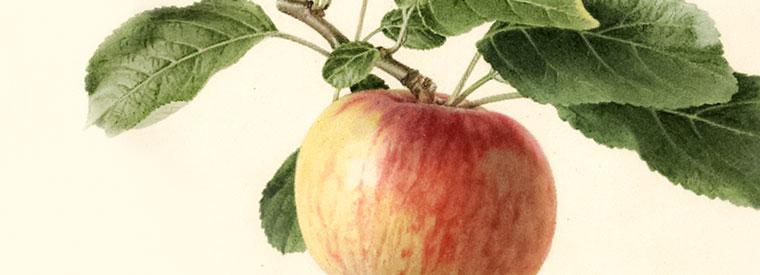"Humanity will be renewed in the Orchard, and the Orchard will restore it."

Fruit
JONAGOLD was developed under the test number NY 43013-1 at the New York State Fruit Test Station in 1943, and was named and introduced in 1968. It is a cross of Jonathan and Golden Delicious. There are a number of strains and cultivars, including a red sport from Belgium. The large dessert fruit is round, conic in shape, and the color is an orange-red blush with the hint of stripes on a yellow background. Some strains, like the Red Jonagold from Japan, will show about 75% red coloration. Some other strains are Nicobel, Jonogored and Jonica. There is toughness to the dry and bumpy skin and it has little aroma. Juicy and crisp, the creamy-yellow flesh has a sweet-tart balance of flavor that usually ranks very high in taste tests. The stalk is long and curved to one side. Jonagold is susceptible to mildew, scab and sunburn, and some winter injury can occur when excessive growth takes place. The tree is open and spreading and it is cold hardy. It is very precocious, often cropping heavily on the 3rd leaf. A triploid, a pollinator is necessary. Golden Delicious should not be used as a pollen source for Jonagold. Instead, provide Melrose, Akane, Winter Banana, Newtown (Albemarle) Pippin or the crabapple, Snowdrift. The irregular or uneven maturing of the fruit makes multiple pickings necessary. Generally, there are 3 or 4 pickings over 14 to 18 days. Even though Jonagold hangs well to the tree, storage life is shortened when the fruit is allowed to hang too long to increase the color. In the warmer parts of the Middle Atlantic States, it is difficult to grow, because of the environmental conditions with erratic quality year to year. It will store about 3 months in air without calcium sprays. In Central Virginia, it ripens in September
Ripening Period
- Early Fall - September
Other Features
- Pollen Sterile

